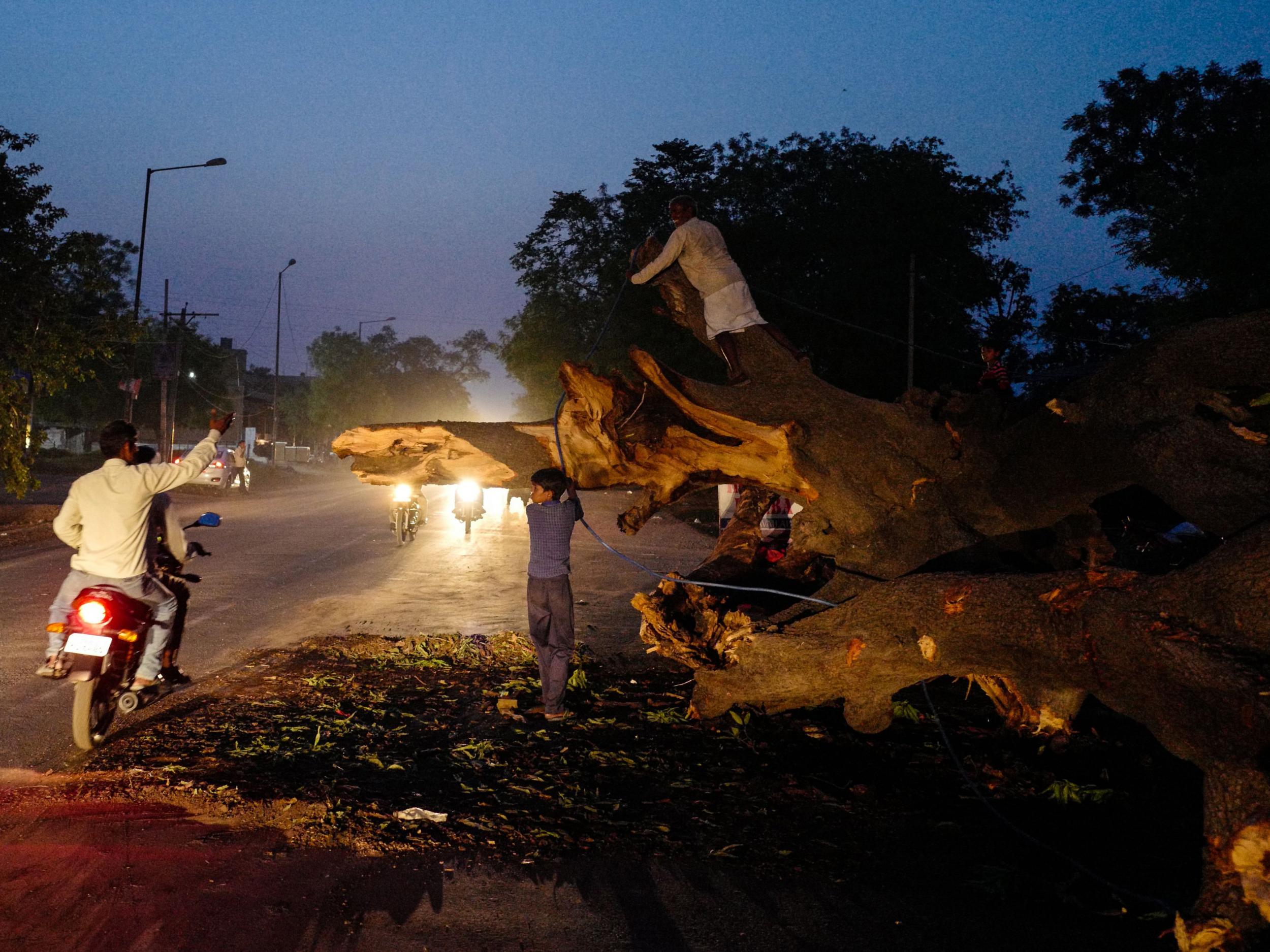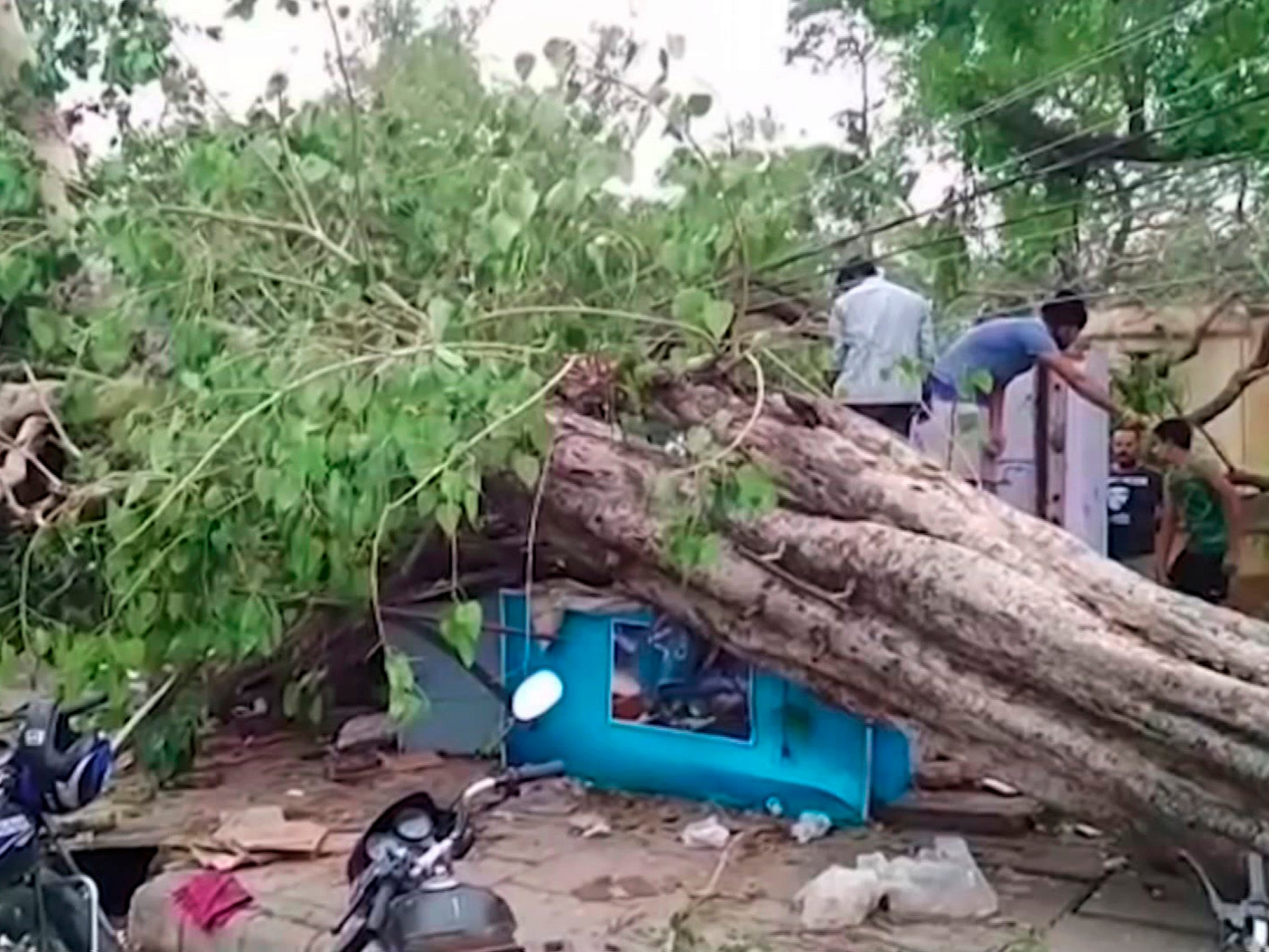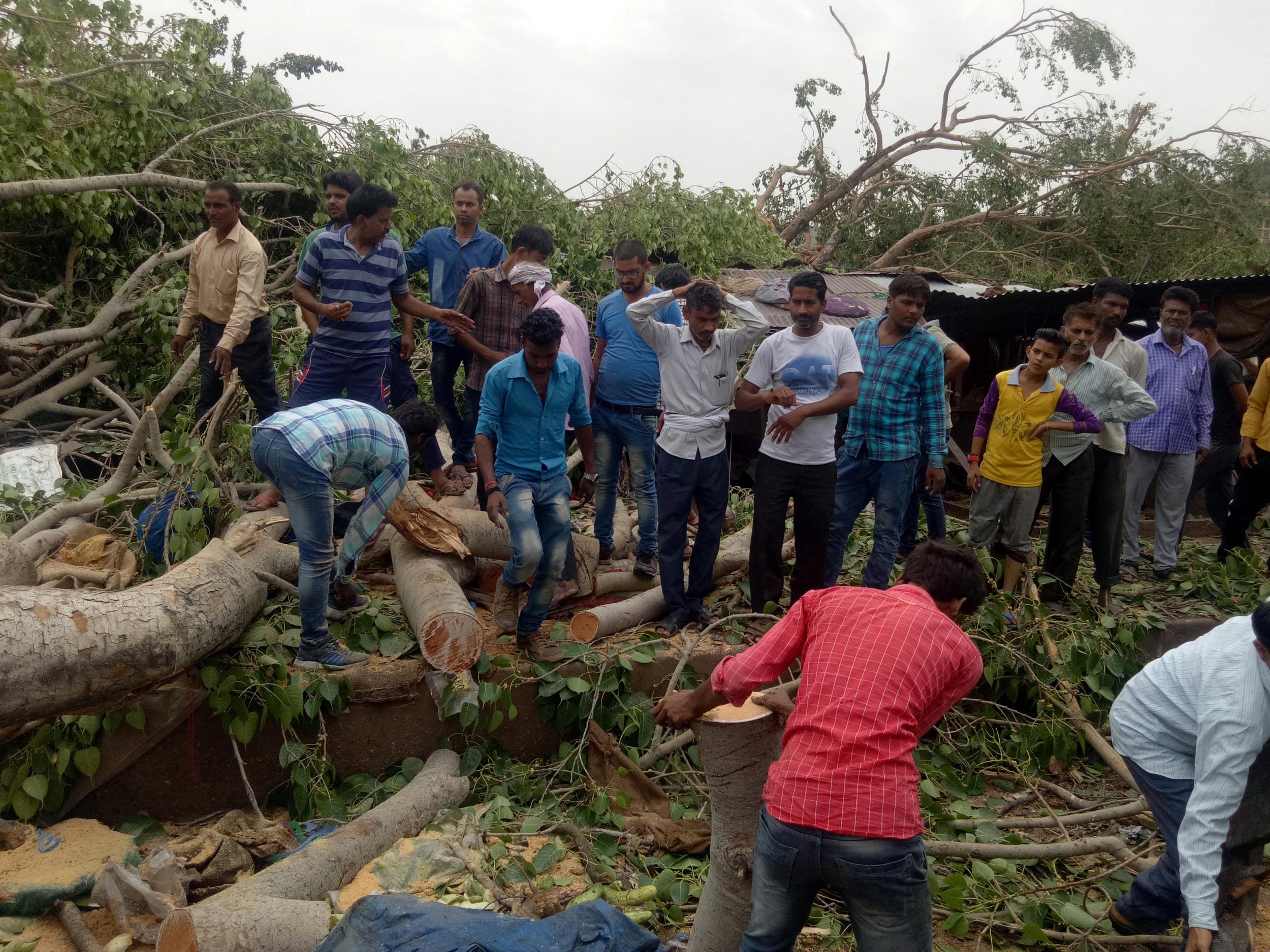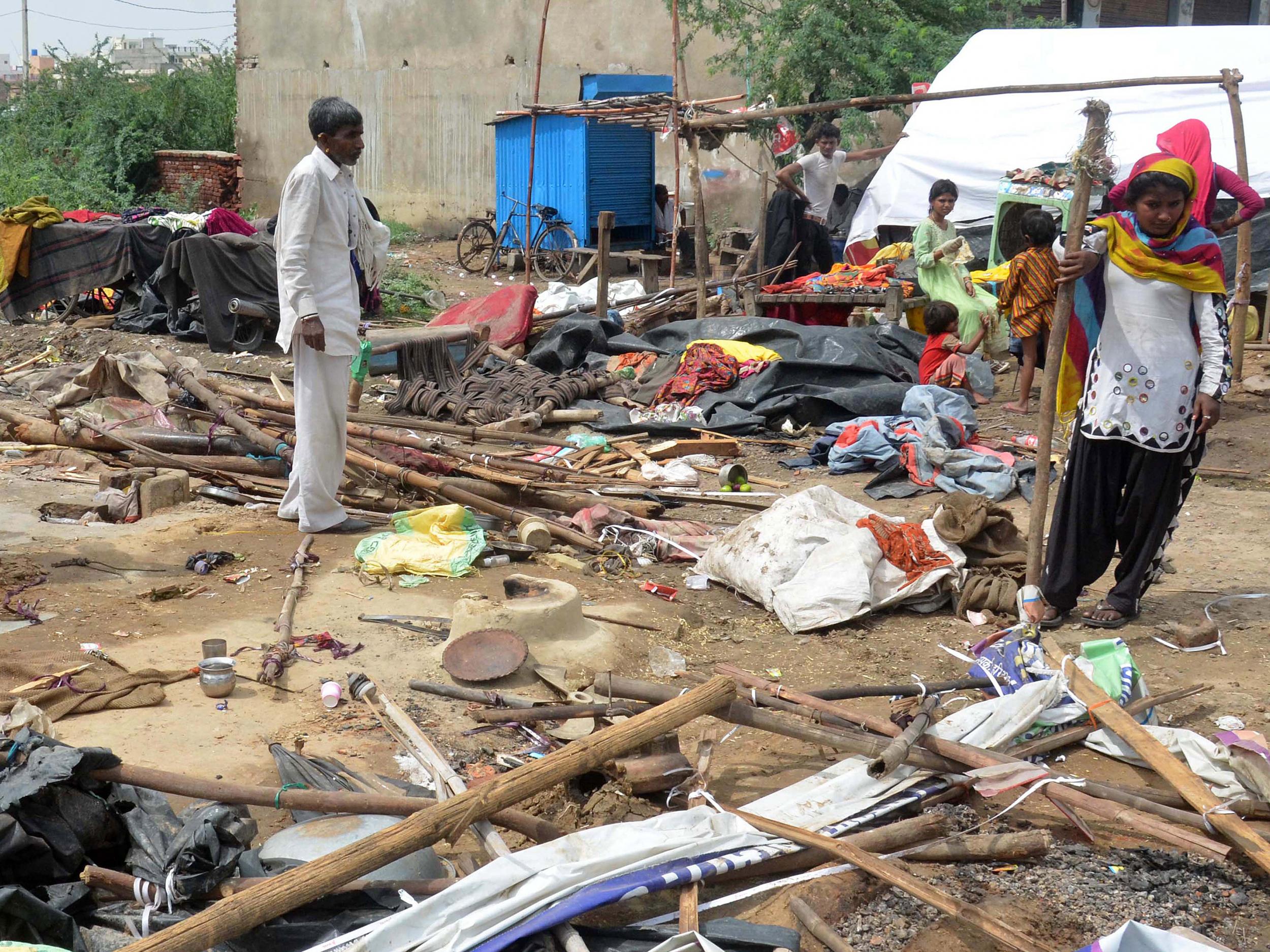India dust storms: Forecasters warn of more to come as 'freak' weather death toll rises to 143
More than 20 dead in single village in Agra district, home of Taj Mahal
Your support helps us to tell the story
From reproductive rights to climate change to Big Tech, The Independent is on the ground when the story is developing. Whether it's investigating the financials of Elon Musk's pro-Trump PAC or producing our latest documentary, 'The A Word', which shines a light on the American women fighting for reproductive rights, we know how important it is to parse out the facts from the messaging.
At such a critical moment in US history, we need reporters on the ground. Your donation allows us to keep sending journalists to speak to both sides of the story.
The Independent is trusted by Americans across the entire political spectrum. And unlike many other quality news outlets, we choose not to lock Americans out of our reporting and analysis with paywalls. We believe quality journalism should be available to everyone, paid for by those who can afford it.
Your support makes all the difference.Forecasters in India are warning of more storms to come, as the death toll from a sudden dust squall this week rose above 125 and another 21 died in a storm in southern India.
Dust storms are not uncommon for this time of year in the region, with winds picking up desert sands from Iran and spraying them across Pakistan and India at high speeds.
What has been remarkable has been the number of casualties from Wednesday’s sudden storm, with officials now saying wind speeds of up to 126kph (78mph) were recorded.

More than 20 people were killed in a single village, Kheragarh, in the Agra district of Uttar Pradesh state, where a number of homes were knocked down by the storm.
Agra - home to the Taj Mahal, India’s most famous tourist attraction - was the hardest-hit area affected by the storm, with at least 43 dead and 35 injured. Officials said the iconic monument, in the headlines recently over its ongoing discolouration from pollution and insect droppings, escaped damage.
Another 19 were killed in the worst-hit Bharatpur district of Rajasthan, where homes collapsed and trees and electricity pylons were brought down. Many more were treated for injuries at the Bharatpur hospital, including a man who told TV reporters he was knocked out when he was struck by a flying tin roof.

An official from the crisis relief office in Uttar Pradesh state said the death toll was the worst from such a storm in the past 20 years, describing the devastation as “unprecedented”.
Orange weather warnings were issued for northern as well as eastern states for late Friday going into the weekend. India’s Meteorological Department said that in particular, more dust storms and thunderstorms were forecast for West Rajasthan.
“There is a forecast for more storms in the next 48 hours across the state so people should be alert,” relief office spokesman TP Gupta told the AFP news agency.
Warnings had also been issued ahead of Wednesday’s storm, but their ferocity took most by surprise. The “freak” storm was caused by a confluence of conditions - abnormally warm temperatures, high moisture and an unstable atmosphere.

“It can be called a freak incident,” Mahesh Palawat, chief meteorologist at Skymet Weather, told the Hindustan Times. “Dust storms are usually not this intense nor do these systems cover such a large area.”
The dust storm hit the capital, New Delhi, in the late afternoon on Wednesday. After a buildup in humidity throughout the day, the sky turned an improbable shade of orange and visibility dropped, as stinging dust sent people rushing for shelter.
Most better-off Delhi residents made light of the storm on social media, welcoming the break in warm temperatures from the downpour of rain that followed, and at most complaining of a thin coating of dust left on surfaces exposed by open windows.

But the city is a place of extreme disparity between rich and poor, and those in the capital’s shanty towns described the devastation such fierce winds caused to their homes.
Sangeetha, a housemaid from the informal settlement of Harkesh Nagar, told The Independent the storm ripped the polythene-sheet roof off her shack and reduced her and other neighbour’s homes to near-rubble.
“My main concern was for my children,” she said, the youngest of three being four years old. When the roof came off, the subsequent rainstorm drenched all the family’s possessions, and cut off their electricity supply.
The roof has been patched up and tied down but she said she worries about the warnings of more storms to come. “At least we will be better prepared this time,” she added.
Separately, an unseasonable electrical storm in which lightning struck an estimated 40,000 times killed 21 people across the southern states of Andhra Pradesh and Telangana on Thursday.
The dead included a seven-year-old boy who was playing under a tree when it was struck by lightning in Karmanghat, on the outskirts of Hyderabad.
RV Chandravadan, head of the Telangana state disaster management department, told AFP people were killed by lightning and winds causing damage to structures and trees. “We have similar weather warnings for [the] next two days,” he said.
India’s monsoon season does not begin for another six weeks and, if it continues, the unusual series of storms may serve to put a spotlight on the country’s pollution crisis. A 2011 study in Nature showed how air pollution exacerbates seasonal storms in the Middle East and South Asia.
Figures released by the World Health Organisation on the same day as the deadly northern Indian storm showed that the country is home to 14 of the 20 most polluted cities on the planet.

Join our commenting forum
Join thought-provoking conversations, follow other Independent readers and see their replies
Comments